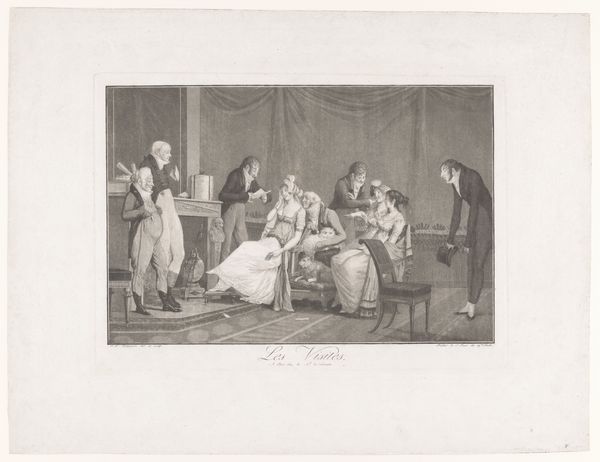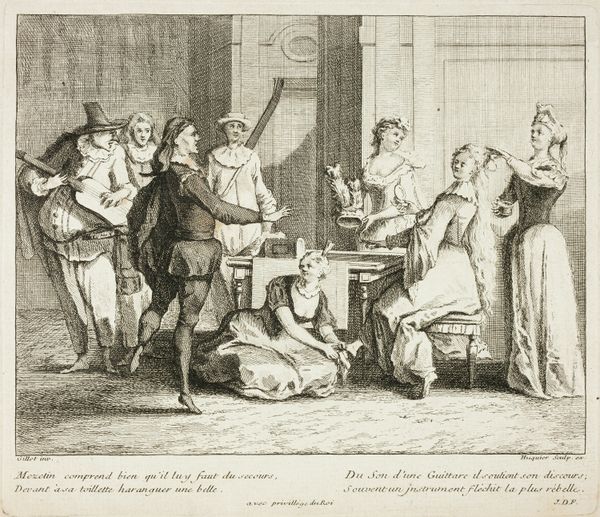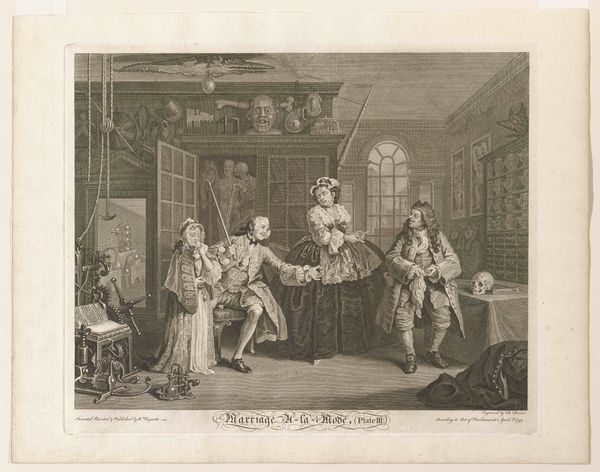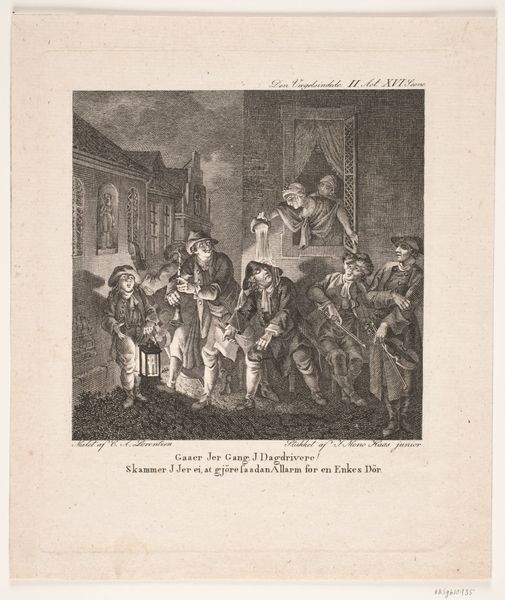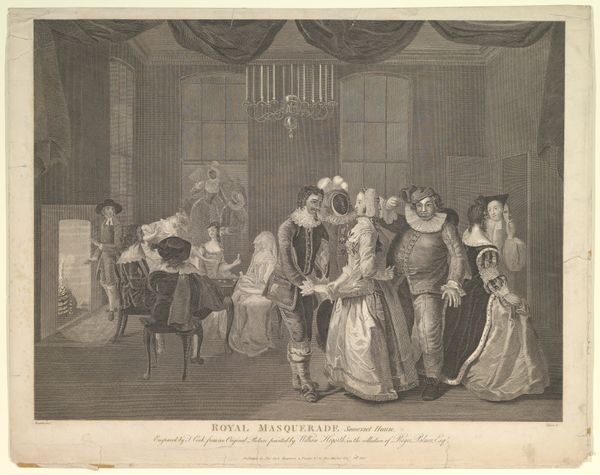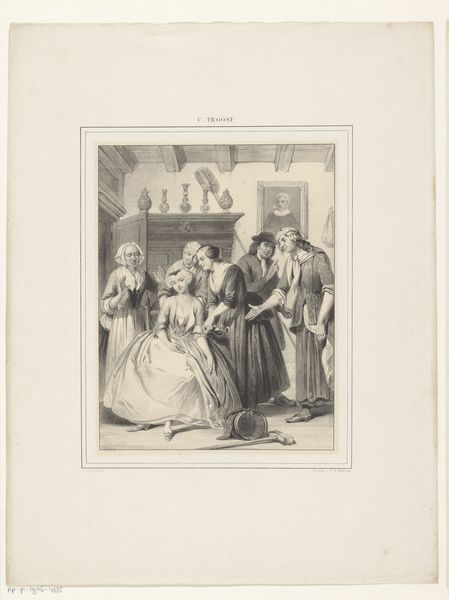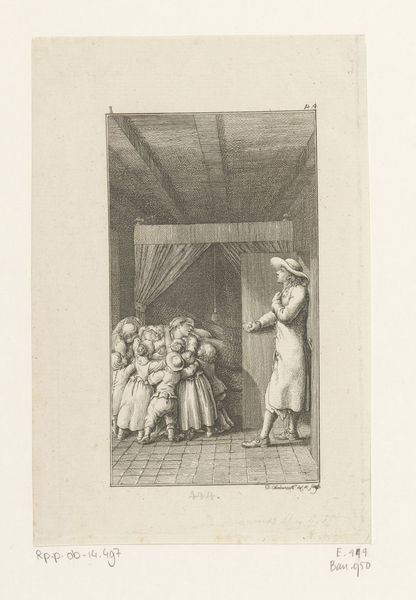
Dimensions: sheet: 11 7/8 x 14 3/4 in. (30.2 x 37.4 cm)
Copyright: Public Domain
Joseph Haynes etched “The Stay-Maker,” based on a sketch by Hogarth, sometime between 1760 and 1829. The central image of the stay-maker fitting a corset evokes a long history of the body being shaped and constrained by fashion. This act of lacing, of tightening, echoes motifs found across cultures—from the binding of feet in ancient China to the restrictive armor of medieval knights. These symbols are not merely about physical alteration but also about the psychological impact of societal expectations. The corset, much like armor, becomes a second skin, influencing posture and movement, thereby projecting a certain image to the world. Think of the image of a tightened waist in a gown; it recurs through centuries, each time signifying something slightly different. The emotional weight of these images speaks to our collective memory of restriction and control, both physical and societal. This emotionality engages viewers on a subconscious level, triggering responses tied to autonomy and identity. The non-linear progression of this symbol demonstrates how it resurfaces, evolves, and acquires new meanings in different eras.
Comments
No comments
Be the first to comment and join the conversation on the ultimate creative platform.




